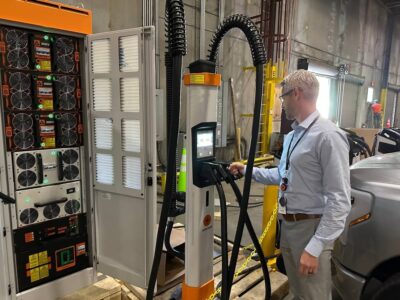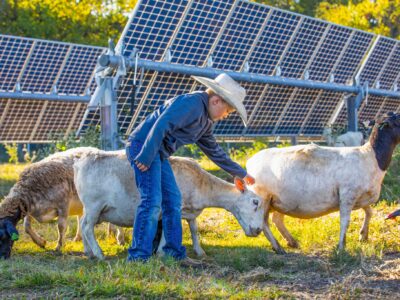The hottest days of the year are leaving us. Winter is coming, but that doesn’t mean the sun won’t stop shining. There were a lot of solar industry developments toward the end of August and into September. Here are our top three solar updates from the end of summer.
9.4-MW Solar Project In Rhode Island

Photo Courtesy TurningPoint Energy
Nexamp and TurningPoint Energy recently celebrated the completion of their 9.4-megawatt (MW) solar farm. Warren, Rhode Island, was the site of a ribbon-cutting ceremony for two arrays made up of 17,000 panels.
The solar farm rests on a former golf course. It is Nexamp’s largest solar project in Rhode Island. Construction started in late 2022, and power from this farm was sent to the grid in July of this year.
The former golf course is part of Rhode Island Energy’s electrical provision. The arrays will provide energy savings and renewable electricity to 15 local nonprofits, schools, and municipal departments.
The project is expected to generate around 11.5 million kilowatt hours annually, contributing to 100% renewable energy across Rhode Island. In a statement, Chris Kearns, acting commissioner of the Rhode Island Office of Energy Resources, called this collaboration “a great contribution to Rhode Island’s Act on Climate objectives and supports our 100% renewable energy standard by 2033.”
Major U.S. Firms Embracing Community Solar

Photo Courtesy Greg Bulla
According to the Coalition for Community Solar Access, T-Mobile, Starbucks, Rivian, Google, Microsoft, and Walmart are some of the many Fortune 500 companies that have agreed to a community solar deal. Community solar allows for local distribution of renewable energy and helps firms reach clean energy and sustainability goals.
Community solar projects tend to be smaller but also faster than utility-grade systems. They provide a source of low-cost renewable energy to low-income residents on top of powering these companies’ stores and businesses.
Microsoft is switching to solar to run its data centers. The tech giant wants 100% of its data center energy needs to be covered by renewables by 2025.
The firm hopes to be carbon-negative by 2030 and carbon-free by 2050, including erasing historical emissions. Walmart and Starbucks hope to run franchise stores, contracting solar providers like Ampion and Nexamp to help achieve these goals.
Protecting Yourself Against Solar Scams

Photo Courtesy Daniele La Rosa Messina
Scammers are getting more creative these days; it makes sense after the extended car warranty phone calls were wildly unsuccessful. According to Canary Media, the practice has entered the solar industry, and it’s important to identify a solar scam if you are considering installing panels or an array in your home.
Forbes ran a survey this year, and while nearly 90% of responders were happy with their photovoltaic systems, 1.5% of households were not. Some say they overspent on arrays they can’t afford, or some didn’t get their panels delivered at all.
In August, the Federal Trade Commission (FTC), the Consumer Finance Protection Bureau, and the Treasury, Energy, and Housing and Urban Development departments released advisory content on protecting yourself from solar scams.
There are helpful tools and guidelines to read over to see if you’re getting scammed by a solar firm. Ignore all free solar ads, and make sure to read between the lines for hidden fees. If you believe a solar provider is scamming you, the FTC asks you to report it.





